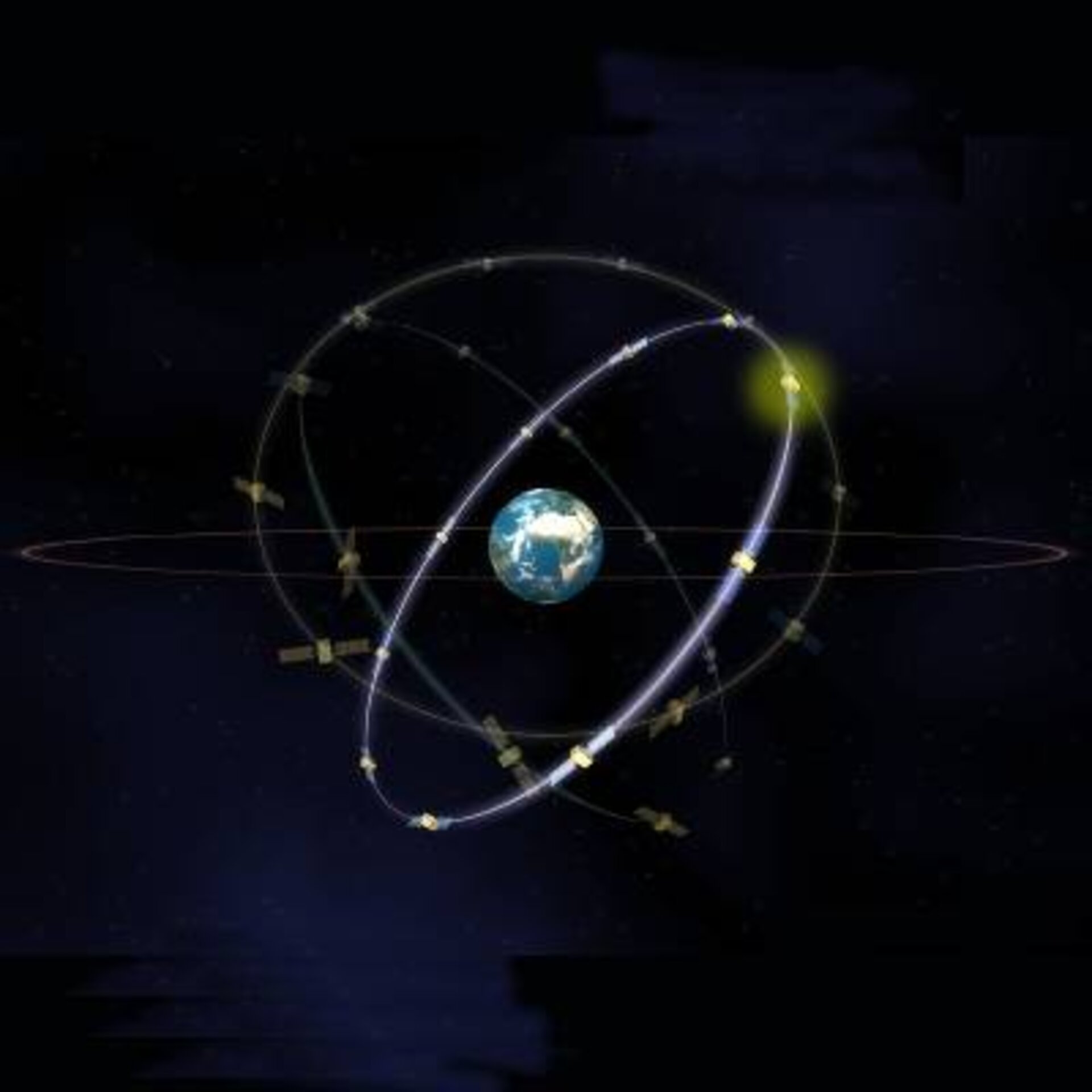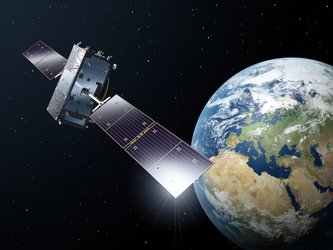How to build up a constellation of 30 navigation satellites
When Galileo, Europe's own global satellite navigation system, is fully operational, there will be 30 new satellites in Medium Earth Orbit (MEO) around the Earth at an altitude of 23 616 km. Ten satellites will occupy each of three orbital planes inclined at an angle of 56° to the equator (see diagram). The satellites will be spread around each plane and will take about 14 hours to orbit the Earth. One satellite in each plane will be a spare, on stand-by should any operational satellite fail.
Planners and engineers at ESA have good reasons for choosing such a structure for the Galileo constellation. With 30 satellites at such an altitude, there is a very high probability (more than 90%) that anyone anywhere in the world will always be in sight of at least four satellites and hence will be able to determine their position from the ranging signals broadcast by the satellites. The inclination of the orbits was chosen to ensure good coverage of polar latitudes, which are poorly served by the US GPS system.
From most locations, six to eight satellites will always be visible allowing positions to be determined very accurately, to within a few centimetres. Even in high rise cities, there will be a good chance that a road user will have sufficient satellites overhead for taking a position, especially as the Galileo system will be interoperable with the US system of 24 GPS satellites.
So how do you build up such a constellation of satellites and ensure that each one is in precisely the correct position at any time? This delicate operation will take place in stages.
First, ESA will launch an experimental satellite at the end of 2004 on board a Soyuz or Zenith spacecraft. Galileo satellites have magneto-torquers and reaction wheels to help maintain them in the correct orbit, but they do not have engines to manoeuvre themselves into the right orbit in the first place. Hence, it is essential for the launcher to place the satellite directly into the correct position.
The experimental satellite will be placed in the first orbital plane from where it will be used to test the equipment on board and the functioning of ground stations. This test campaign will last two and a half years. Initially, the performance of the two atomic clocks on-board will be characterised. Then the signal generator will be turned on to provide experimental signals with various modulation characteristics. Over the test period, scientific instruments on board will measure various aspects of the space environment around the orbital plane, in particular the level of radiation, which is greater than in low Earth or geostationary orbits.
Next, at the end of 2007, ESA will launch the first four operational satellites using two separate launchers. The first two satellites will be placed in the first orbital plane and the second in the second orbital plane. These four satellites, plus part of the ground segment, will then be used to validate the Galileo system as a whole, using advanced system simulators. In early 2008, the next two satellites will be launched into the third orbital plane also on board a Soyuz or Zenith launcher.
By this time, the Galileo system will have been validated. The next and final stage will be to build up the rest of the constellation quickly so that a full service can be provided to users. Ariane 5, Europe's heavy launcher, will be pressed into service. During 2008, three separate Ariane 5 launchers from Kourou, French Guiana, will each place eight satellites into the first, second and third orbital planes. By the end of 2008, the constellation of ten satellites per plane will be complete and Galileo will be fully operational, providing guidance to a wide variety of users throughout the world.















 Germany
Germany
 Austria
Austria
 Belgium
Belgium
 Denmark
Denmark
 Spain
Spain
 Estonia
Estonia
 Finland
Finland
 France
France
 Greece
Greece
 Hungary
Hungary
 Ireland
Ireland
 Italy
Italy
 Luxembourg
Luxembourg
 Norway
Norway
 The Netherlands
The Netherlands
 Poland
Poland
 Portugal
Portugal
 Czechia
Czechia
 Romania
Romania
 United Kingdom
United Kingdom
 Slovenia
Slovenia
 Sweden
Sweden
 Switzerland
Switzerland

































